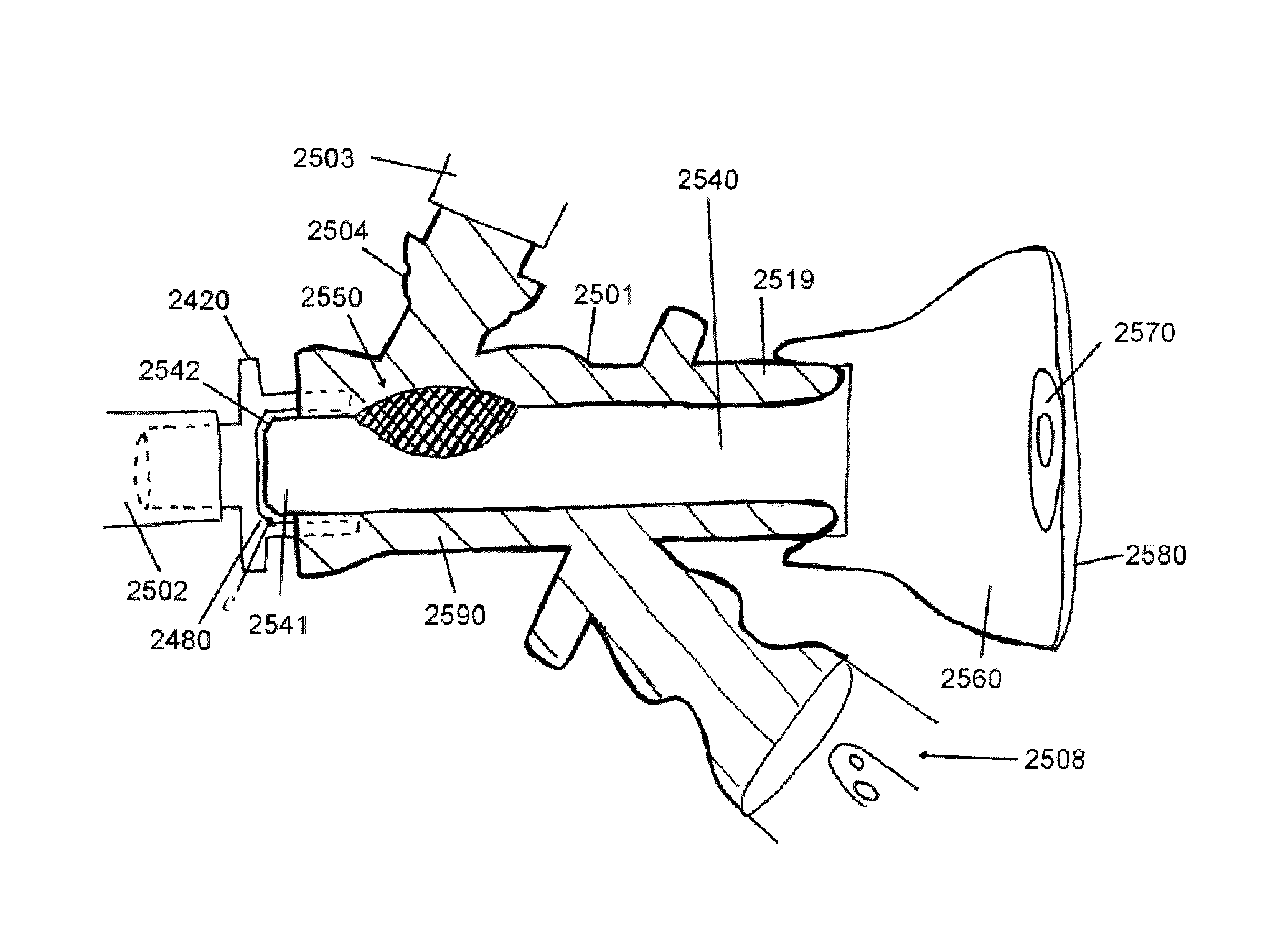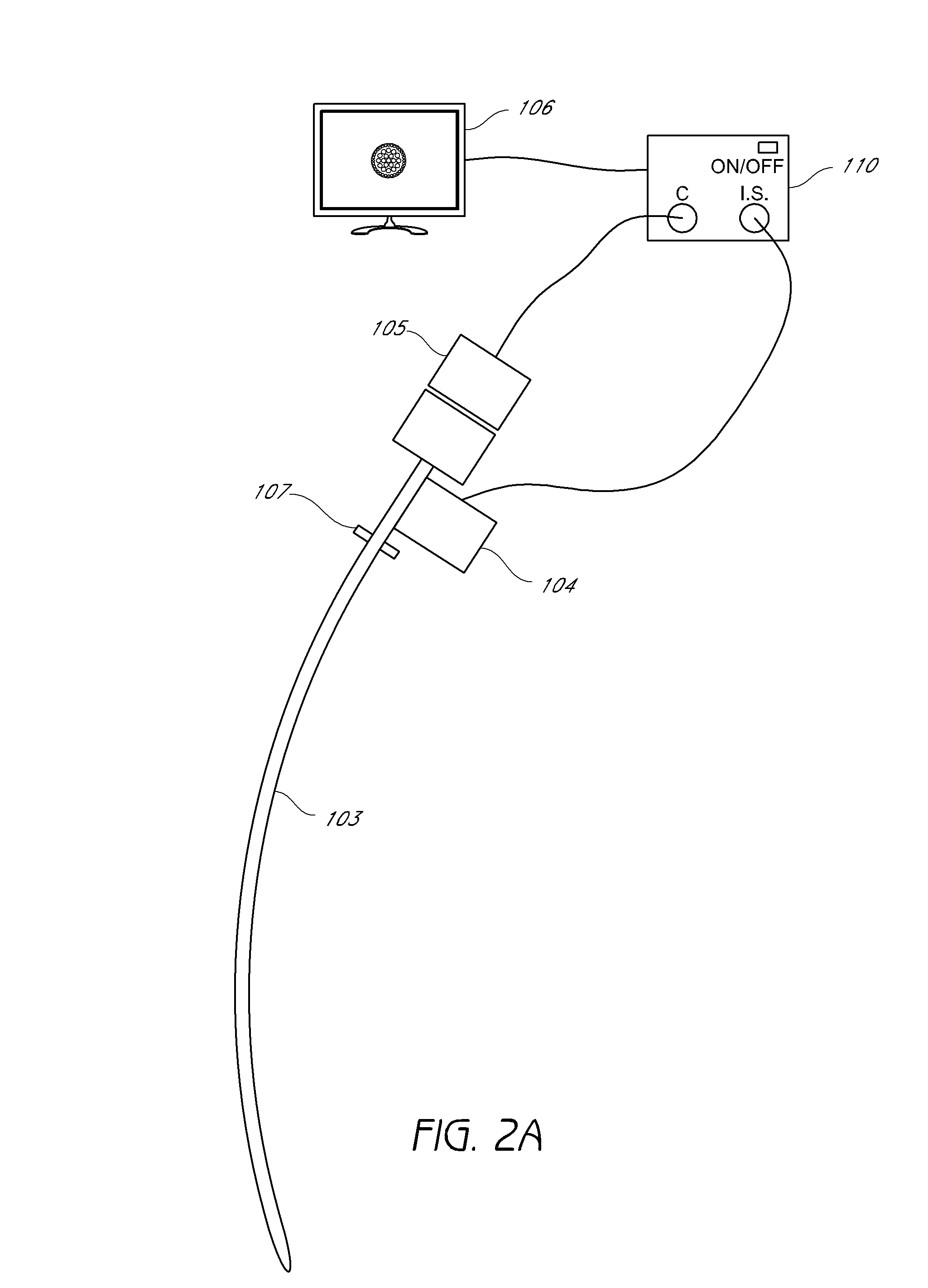Endotracheal tube coupling adapters
a technology of endotracheal tube and adapter, which is applied in the field of endotracheal tube coupling adapters, can solve the problems of requiring a relatively long time to be obtained and interpreted, and affecting the survival of acutely ill patients
- Summary
- Abstract
- Description
- Claims
- Application Information
AI Technical Summary
Benefits of technology
Problems solved by technology
Method used
Image
Examples
example 1
[0548]A feasibility test was performed on an endotracheal tube removed from a patient that was extubated after five days. The endotracheal tube was freshly blind suctioned just prior to extubation. Biofilm was visible from the outside of the endotracheal tube before cleaning. An embodiment of the endotracheal tube cleaning device was inserted within the endotracheal tube and a cleaning procedure was performed as described herein. Two ccs of biofilm was removed. Microbiology testing was performed on the biofilm and the following types of bacteria were found: staph aureus, pseudomonas, streptococcus and candida. After cleaning with the endotracheal tube cleaning device, 99% of the bacteria was removed from the endotracheal tube (as determined by the change in colony counts).
example 2
[0549]A feasibility test was performed on an endotracheal tube removed from a patient that was extubated after four days. The endotracheal tube was freshly blind suctioned just prior to extubation. Biofilm was not visible from the outside of the endotracheal tube before cleaning. An embodiment of the endotracheal tube cleaning device was inserted within the endotracheal tube and a cleaning procedure was performed as described herein. 1.5 ccs of biofilm was removed. Microbiology testing was performed on the biofilm and the following types of bacteria were found: staph aureus, pseudomonas and streptococcus. After cleaning with the endotracheal tube cleaning device, 99% of the bacteria was removed from the endotracheal tube (as determined by the change in colony counts).
example 3
[0550]Endotracheal tube resistance testing was performed on an endotracheal tube removed from a patient. The testing was performed at a ventilation flow rate of 60 liters per minute. Bloody secretions and visible accumulation was present in the distal half of the endotracheal tube. In some embodiments, the secretions and biofilm collect at the “bottom” or distal half of the endotracheal tube. The endotracheal tube was an 8 mm endotracheal tube. The endotracheal tube showed resistance to flow similar to a new 7 mm tube. In one embodiment, an 8 mm to 7 mm reduction in effective internal diameter results in a relative increase in resistance of about 70%. Generally, a 20% increase in resistance is enough to impede flow and be detrimental. An embodiment of the endotracheal tube cleaning device was inserted within the endotracheal tube and a cleaning procedure was performed as described herein. After cleaning, the endotracheal tube resistance was reduced by about 90%. The 8 mm endotrachea...
PUM
 Login to View More
Login to View More Abstract
Description
Claims
Application Information
 Login to View More
Login to View More - R&D
- Intellectual Property
- Life Sciences
- Materials
- Tech Scout
- Unparalleled Data Quality
- Higher Quality Content
- 60% Fewer Hallucinations
Browse by: Latest US Patents, China's latest patents, Technical Efficacy Thesaurus, Application Domain, Technology Topic, Popular Technical Reports.
© 2025 PatSnap. All rights reserved.Legal|Privacy policy|Modern Slavery Act Transparency Statement|Sitemap|About US| Contact US: help@patsnap.com



